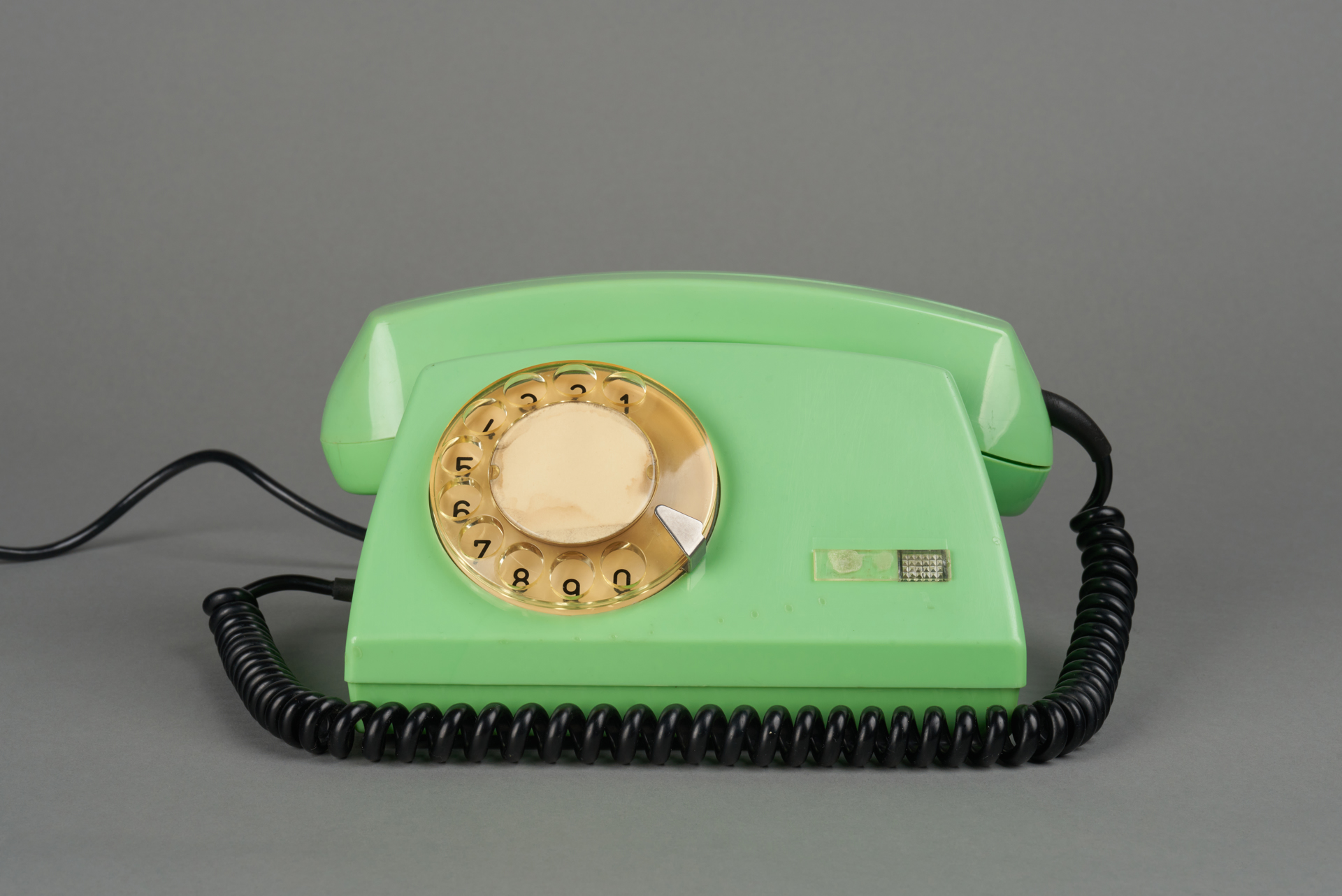
Creator
Radomska Wytwónia Telefonów
Time and place of creation
Time:
1976 listopad - 1976
Place:
Poland
The Aster-72 telephone was manufactured in the heyday of the Radomska Wytwórnia Telefonów (RWT), which is confirmed by several factors. When it resumed operations after World War II, the factory in Radom employed only 82 people, but by 1988 the staff numbered 2200 people. From the end of the war until 1970 the enterprise manufactured 5 million telephones, the same number as in 1970-1976. In 1988, the record for telephone production was reached – 1,600,000 in a year. RWT products were exported worldwide, including to Thailand, Morocco, France, and Greece. In Syria the enterprise even had its own assembly plant.
The two decades of prosperity (the 1970s and 1980s) was driven by the popularisation of the telephone as a device used daily in Polish homes. Until then the production output had been mostly exported or used by industry and government administration. In the history of communist Poland, “Gierek’s decade” involved increased consumption in households, the introduction of a new design language, and the permission to purchase licenses from countries of the capitalist West. For the Radomska Wytwornia Telefonów this entailed the launch of a new, highly successful family of telephones named after flowers, of which the Aster-72 was one example.
The history of the Aster telephones begins in July 1969, at the industrial exhibition in Moscow where the prototype Aster-70 was presented. It was developed by engineers J. Bojarczak, S. Józwowicz and Z. Jagielski. Initially, production of this telephone model was intended for export to the USSR. In comparison with the later Aster-72, the Aster-70 was equipped with the TN63A rotary dial taken from older CB 662 models, a different ringer, and a different audio transformer. Even in this model though, the change in design, characteristic of the Aster-72, could already be seen. Both models were launched on the Polish market in 1973. The Aster-72 was an office telephone, intended to work with manual or automatic CB telephone exchanges with a classic electrical design, mechanical bell, and the French TN-74 rotary dial for which a licence was purchased. The Aster-72 was also manufactured in export versions. The most interesting models were sent to the French, Canadian and American markets, although the telephone was most successful on the highly absorbent Eastern markets. In 1973-1985, the device was manufactured at the RWT and production was then moved to Telkom-Telcz, where the Asters continued being manufactured until the early 1990s.
The Aster-72 presented here is in a very rare colour. Usually, models can be found in grey, ivory, orange, or red versions.
Creator
Radomska Wytwónia Telefonów
Time and place of creation
Time:
1976 listopad - 1976
Place:
Poland











